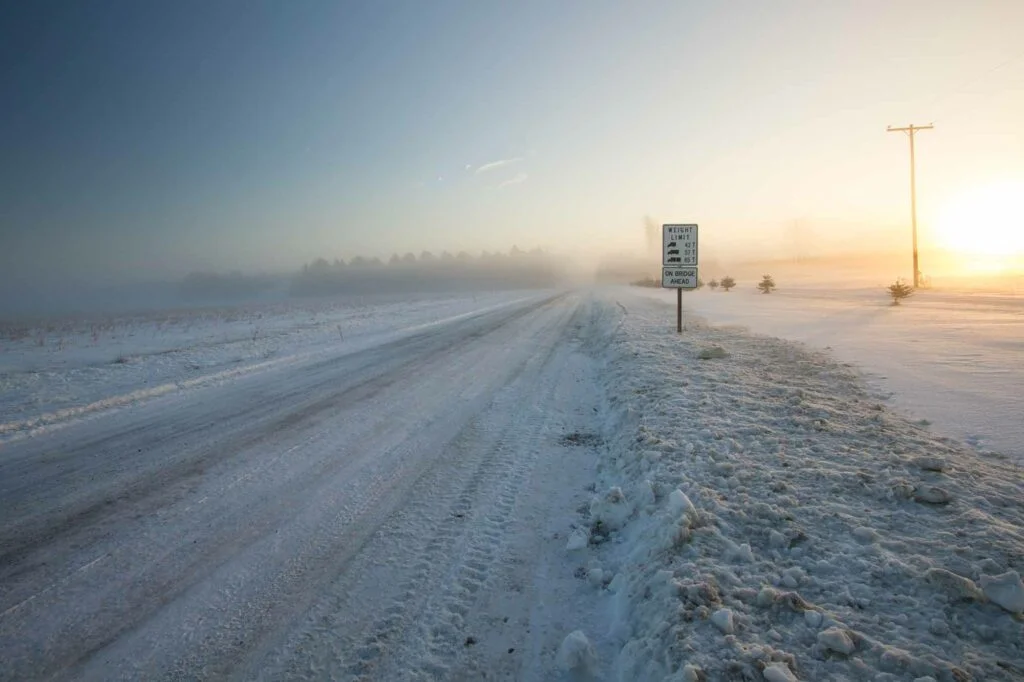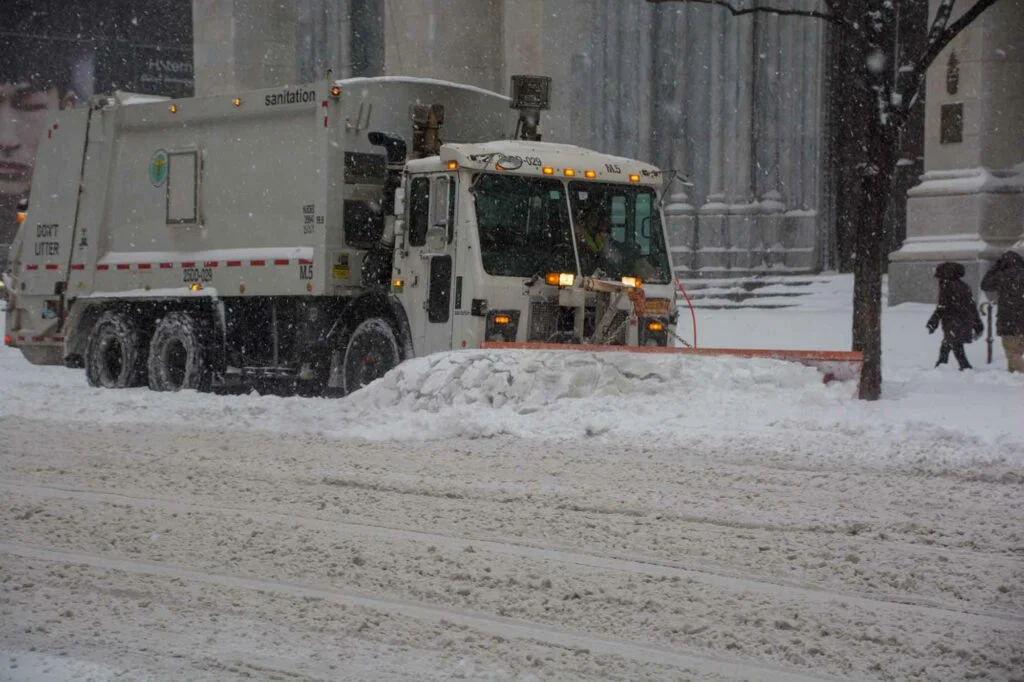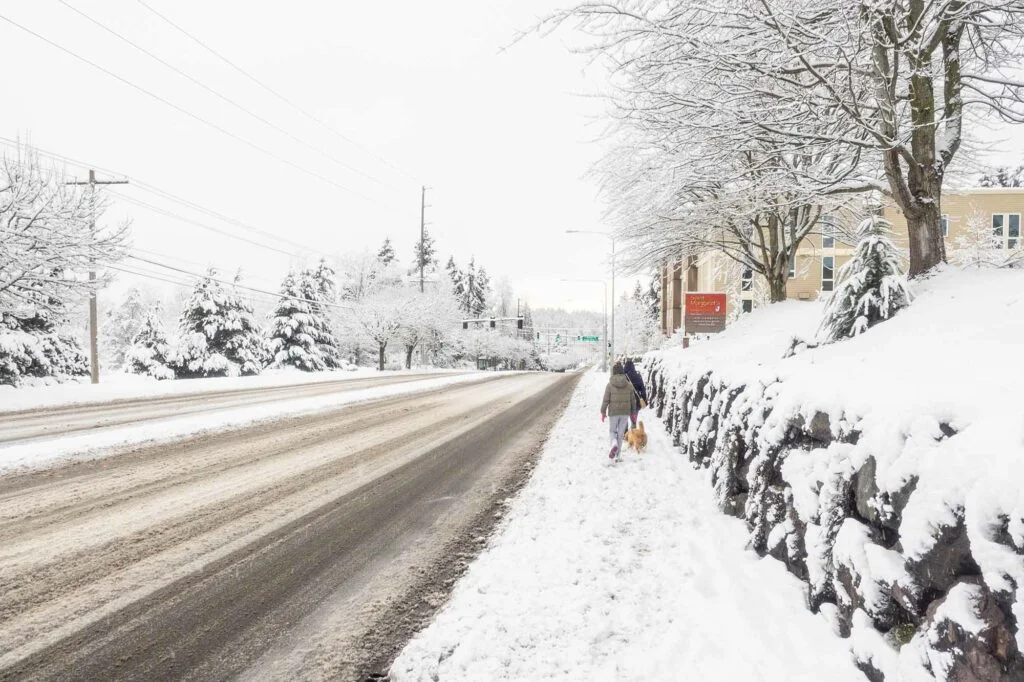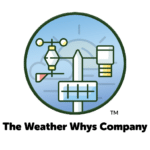A blizzard is a severe snowstorm that produces extensive wintry precipitation over a large area, including heavy snow and powerful winds, typically accompanied by freezing temperatures. An especially severe blizzard can dump snow measured in feet over a widespread area. Blizzards can also create whiteout conditions, making travel very difficult or impossible.
Blizzards occur most frequently from the Rocky Mountains eastward and are especially frequent across the Great Plains, Upper Midwest, and the Northeastern US. Cities like New York City, Boston, and even Washington, DC typically experience a blizzard every so many winters.
At least one blizzard occurs somewhere within the United States in a typical winter. Blizzard conditions can occur for brief periods during intense winter storms, too — but not for long enough periods to indeed be considered a “blizzard.
The National Weather Service typically issues a blizzard warning to alert those in its path to a prolonged period of heavy snowfall, drifting snow, and dangerously low temperatures. However, heavy snow is not always required for a blizzard warning: high winds combined with even moderate snowfall can create whiteout conditions.
These storm systems are hazardous because they make traveling nearly impossible due to poor visibility. Wind and blowing snow can limit visibility to a matter of feet. A whiteout can be a pretty scary experience.
What is a Blizzard?
Here’s what defines a blizzard according to the National Weather Service:
- Sustained winds or frequent gusts to 35 miles per hour for at least three hours
- Heavy snowfall
- Considerable blowing and drifted snow
While many big winter storms will have brief periods of blizzard conditions, it is challenging for these storms to produce the extreme winds necessary to be considered a “blizzard.”
Low wind chill values can be another danger to consider depending on the temperature. It’s not unusual for the combination of wind and low temperatures to cause dangerously low wind chills, sometimes well below zero.
What is a Ground Blizzard?

Even after the heavy snows stop falling, snow can still be blown around by strong surface winds, called a ground blizzard. Visibility is reduced to less than ¼ mile in ground blizzards, and they can occur quite suddenly. The National Weather Service issues a Blowing Snow Advisory when visibilities will be reduced from three miles due to wind-driven snow.
How a Blizzard Forms
A blizzard happens due to a rapidly intensifying low-pressure system that carries moisture from the Pacific Ocean in the Western US and the Gulf of Mexico or the Atlantic Ocean on the East Coast. Moist air moves north into the cold air as the intense storm system moves north and east, causing snow to fall.
A high-pressure system is typically located over southeastern Canada for east coast blizzards. Cold air from the Arctic is displaced southward, setting up the necessary cold for heavy snow to fall. Like most snowstorms in the US, the heaviest snows are found on the northwest side of the blizzard. In the warmer air to the south and east, it’s not all that uncommon to find strong to severe thunderstorms (and sometimes tornadoes) in this warm sector.
Blizzards’ tight pressure gradient causes powerful winds and triggers whiteout conditions due to blowing snow, limiting visibility to just a few feet.
They are most common in the Great Plains, Upper Midwest, and along the eastern coast of the United States, roughly from North Carolina northward. They also occur frequently in the winter on the Rocky Mountains’ eastern slopes and Eastern Canada (typically after striking the Northeast US).
Blizzards are dangerous and make traveling nearly impossible due to such poor visibility that occurs with them. It may be difficult or even impossible for some people to travel in regions where blizzards occur, and sometimes for days at a time.
After a blizzard, blowing snow and low wind chills are common, so even after the snow stops, the dangers of blizzards persist.

Major Recent Blizzards
While blizzards are mostly a rare event for any single location in the United States during an entire winter, there is at least one major snowstorm per season across the Continental United States. Some of these storms can be pretty memorable.
Winter Storm Jonas
In 2016, a blizzard struck the US East Coast in late January. This storm was referred to by many different names, including “Snowzilla” or “Jonas,” as The Weather Channel named it. Over two feet of snow fell in some areas in Washington DC, which shut down many major roads, including I-95. Many states from New England along the East Coast declared a state of emergency for this snowstorm. This storm dumped 27.5 inches of snow in Central Park, more than even the Great Blizzard of 1888.
Winter Storm Nemo, or “Snowmageddon”
In 2013, a powerful blizzard hit the New England and Mid-Atlantic regions bringing wind gusts up to hurricane force in many areas. Called “Nemo” or “Snowmageddon,” the storm caused massive disruptions across these regions for several days, including New York City. Thousands of people lost power due to downed trees from high winds, and hundreds of automobile accidents occurred.
Denver’s Twin Blizzards
In 2006, a series of two blizzards hit the Denver, Colorado area, and over two feet of snow accumulated in some places. The snowstorm closed many highways leading into and out of Denver for several days, including Interstate 70.
Winter Storm Safety Tips

Winter storms like blizzards can be dangerous due to the heavy snow accumulations, strong winds, and low visibility that accompanies them. You need to prepare ahead of time before a winter storm hits your area. What should you do?
- If you are traveling in an automobile during a winter storm, make sure that everyone in the car is dressed warmly and wears a seatbelt.
- Check with transportation authorities before traveling into an area that a blizzard or heavy snowstorm has hit. Travel may be dangerous due to heavy snow accumulations and blowing slow.
- If you are at home and a blizzard is moving into your area, make sure to have an emergency kit with food, water, any essential medications you might need during the storm, and other essential supplies for several days if the power goes out.
- Make sure to stock up on extra firewood or coal so that you can keep your home warm during the storm for several days if needed.
- If you are snowed in at home, make sure to have plenty of entertainment on hand, such as books, board games, and any other activities that will help pass the time until conditions improve enough for travel again.
We also recommend purchasing a weather radio to get the latest information from the National Weather Service.
Wrapping Up
Blizzards aren’t your average snowstorm: they are powerful winter storms. These storms pack quite the punch, whether it’s the low wind chill values or heavy falling snow. If you’re ever stuck in blizzard conditions, stay put and follow our safety tips above. Curl up with a good book or binge some Netflix, and think about warmer weather: winter doesn’t last forever.


